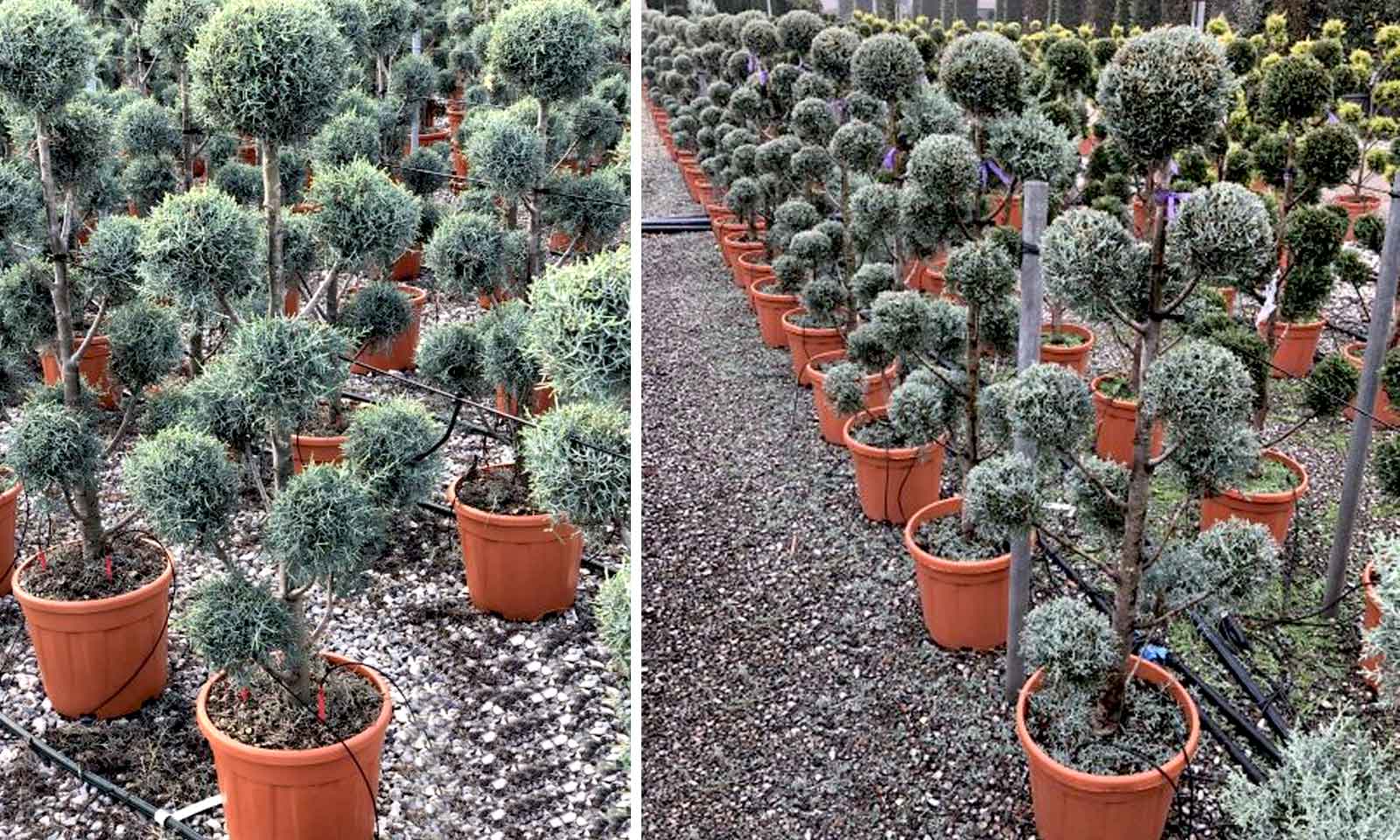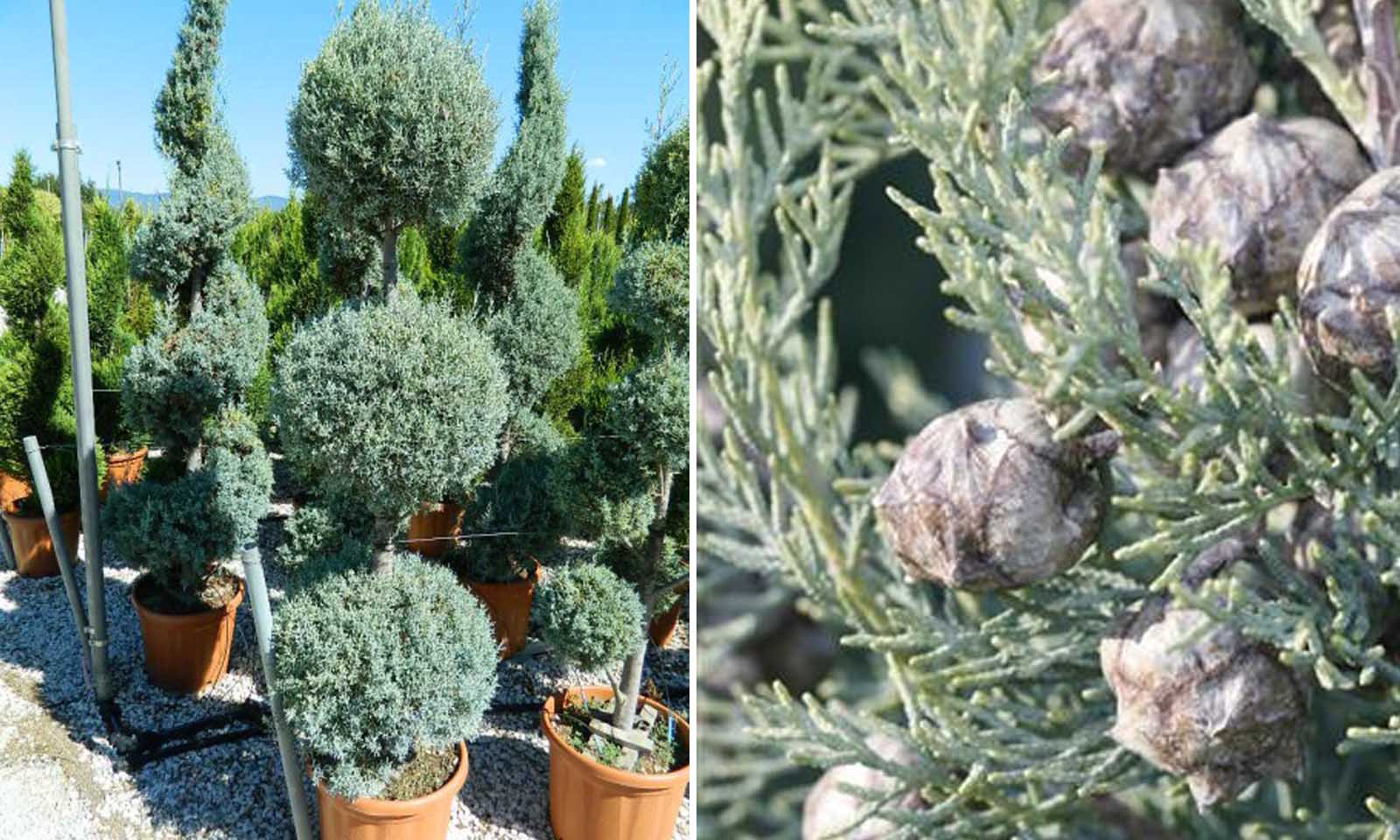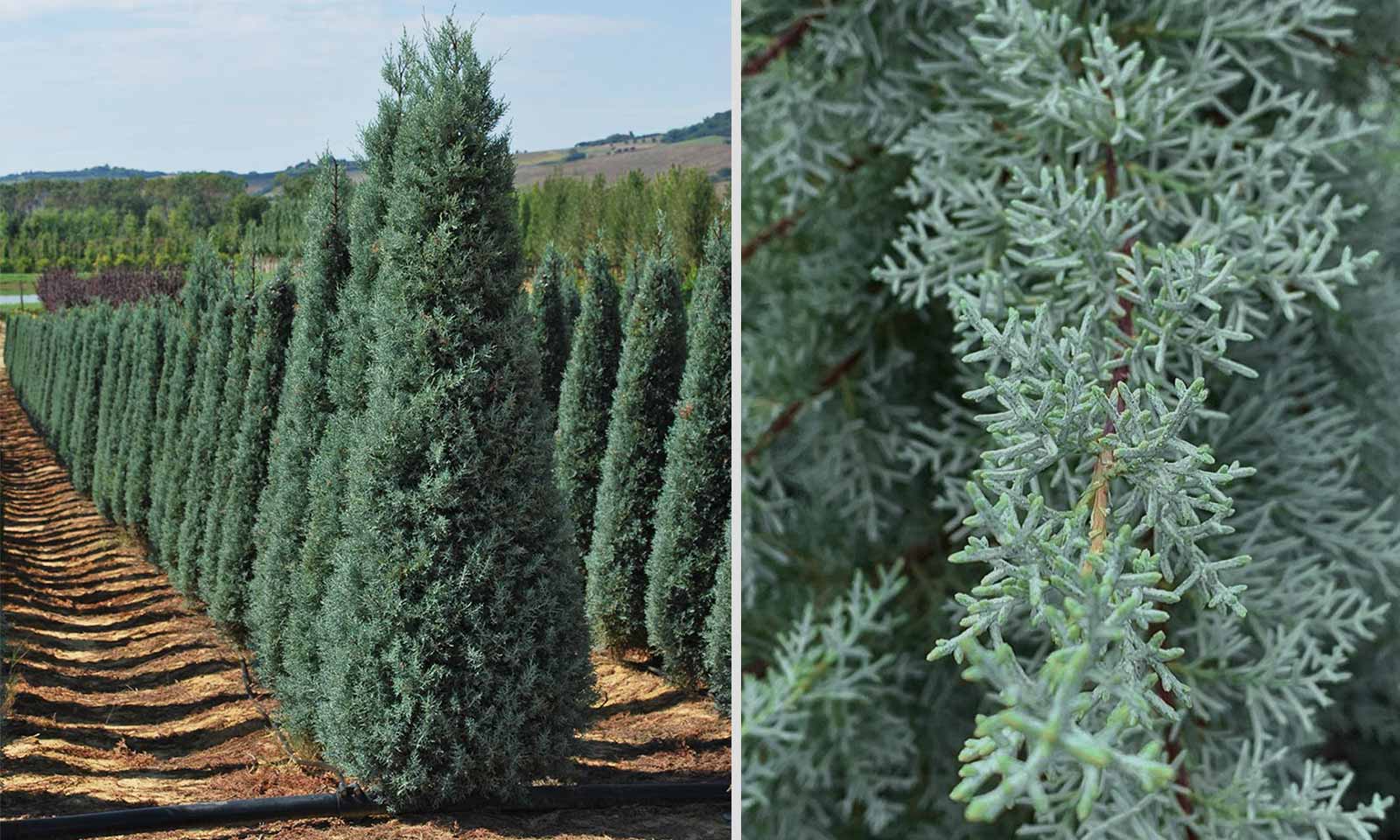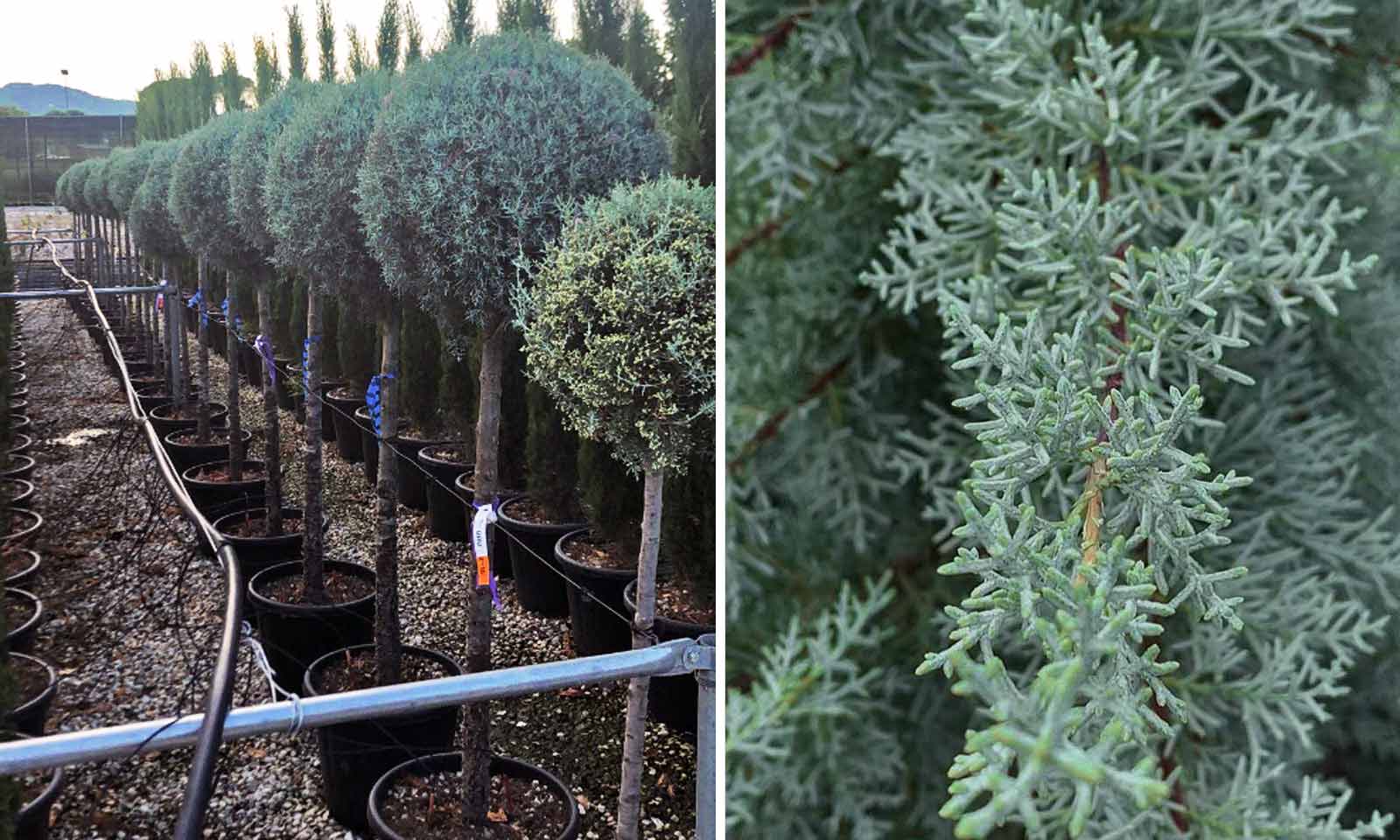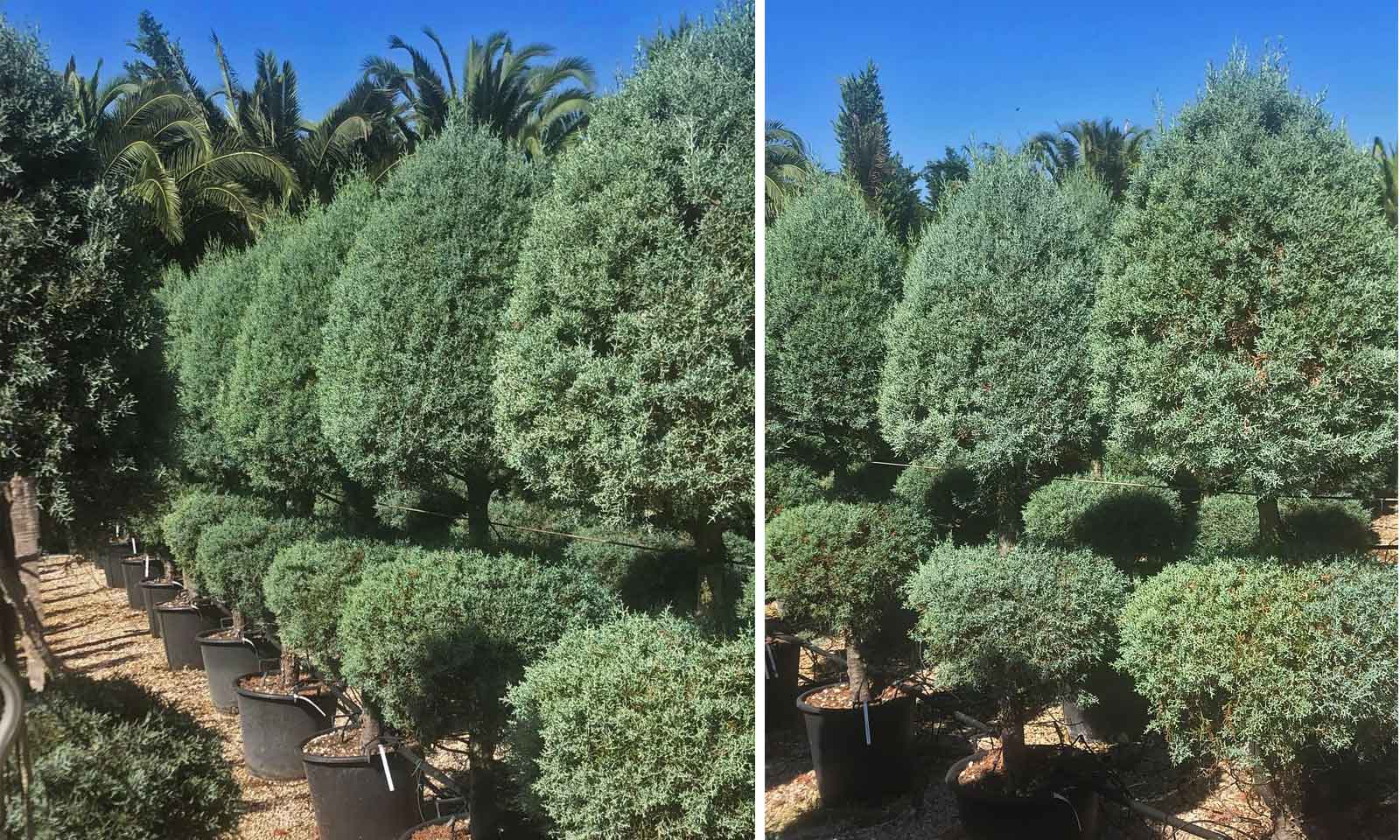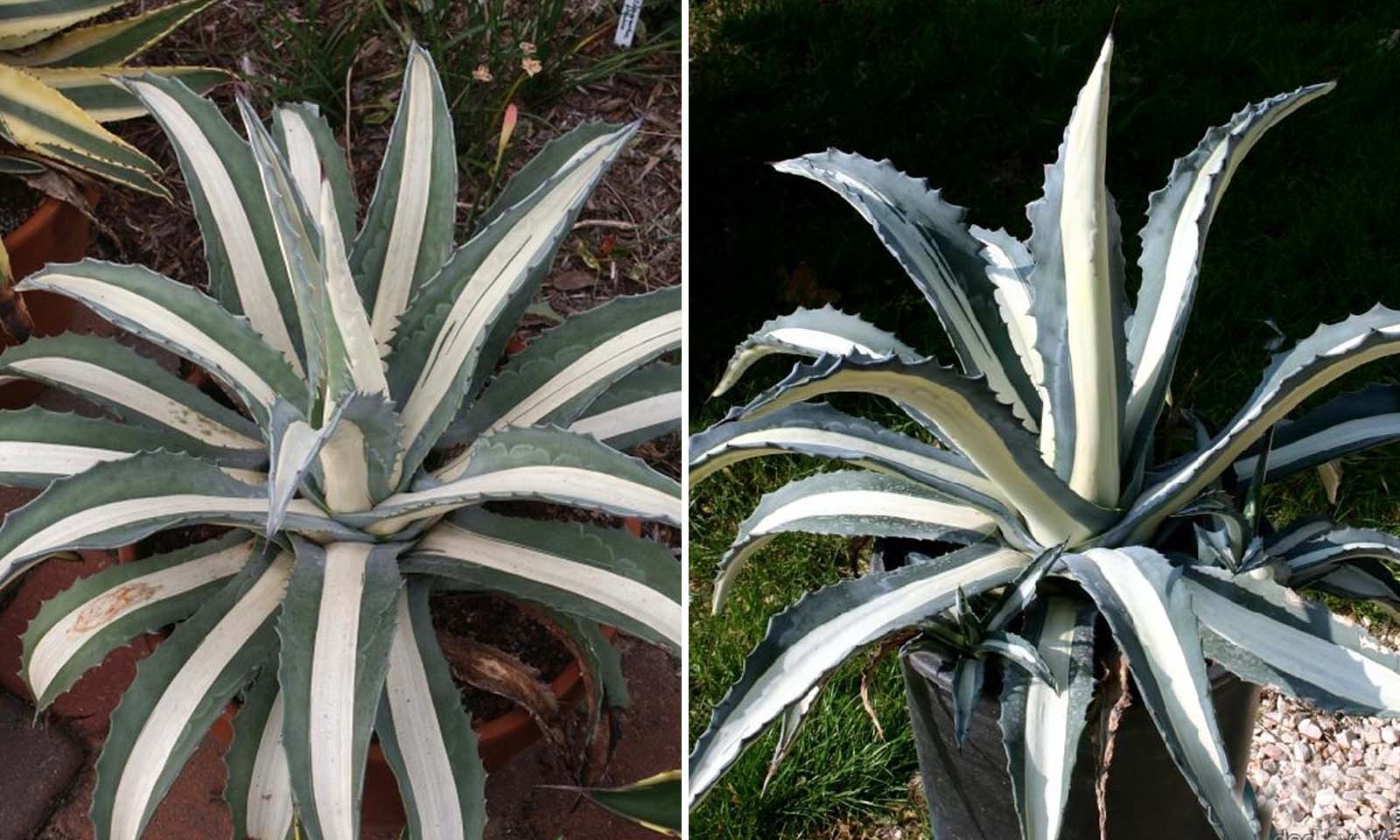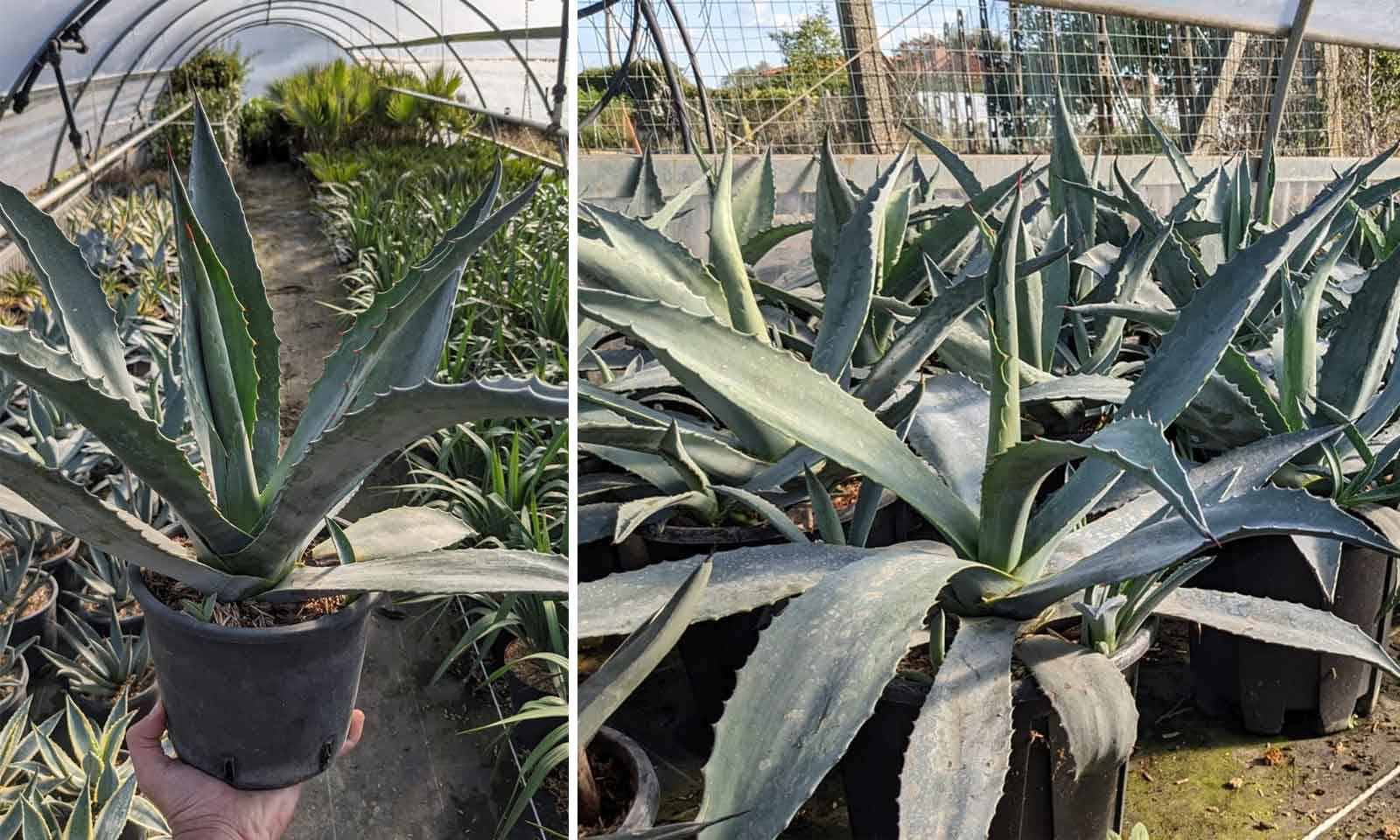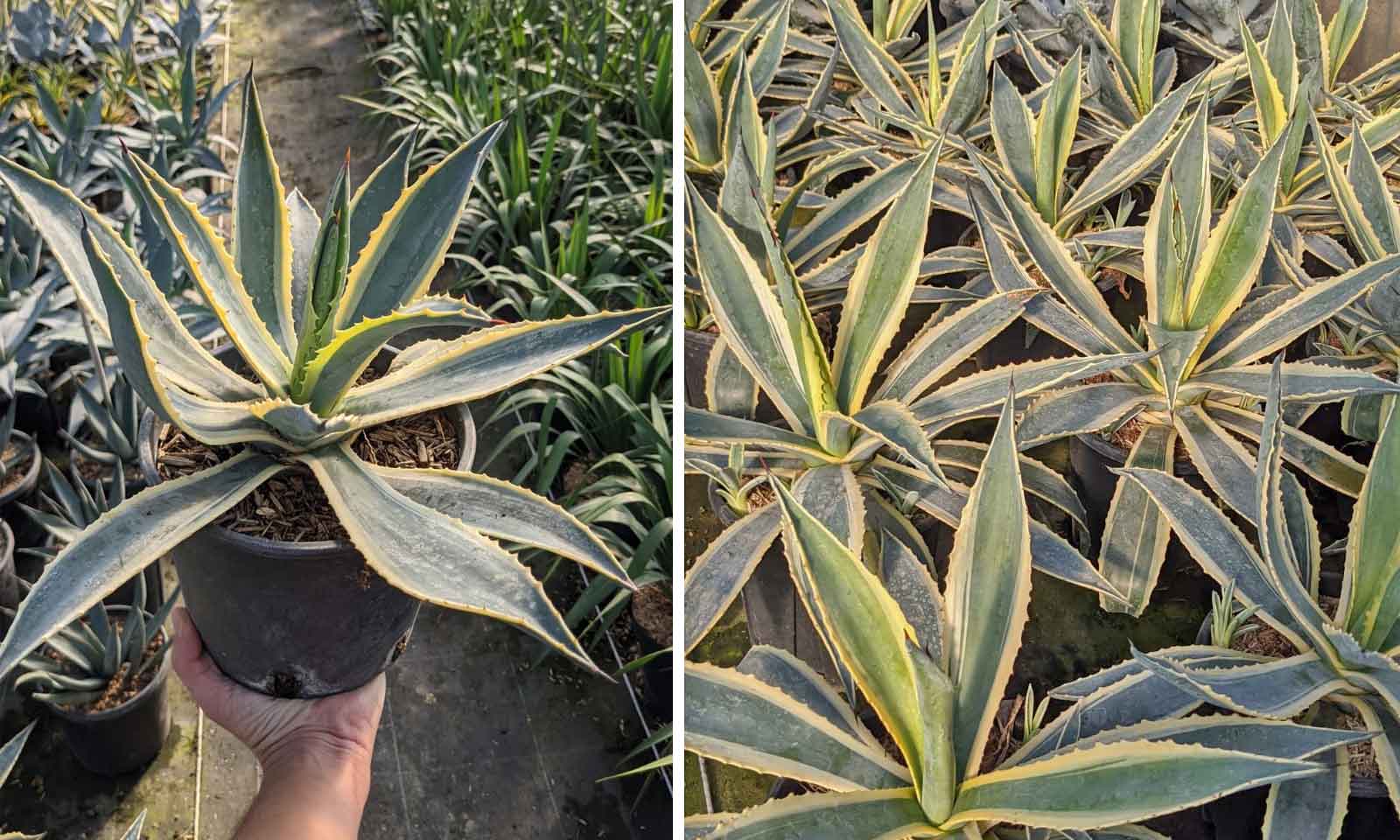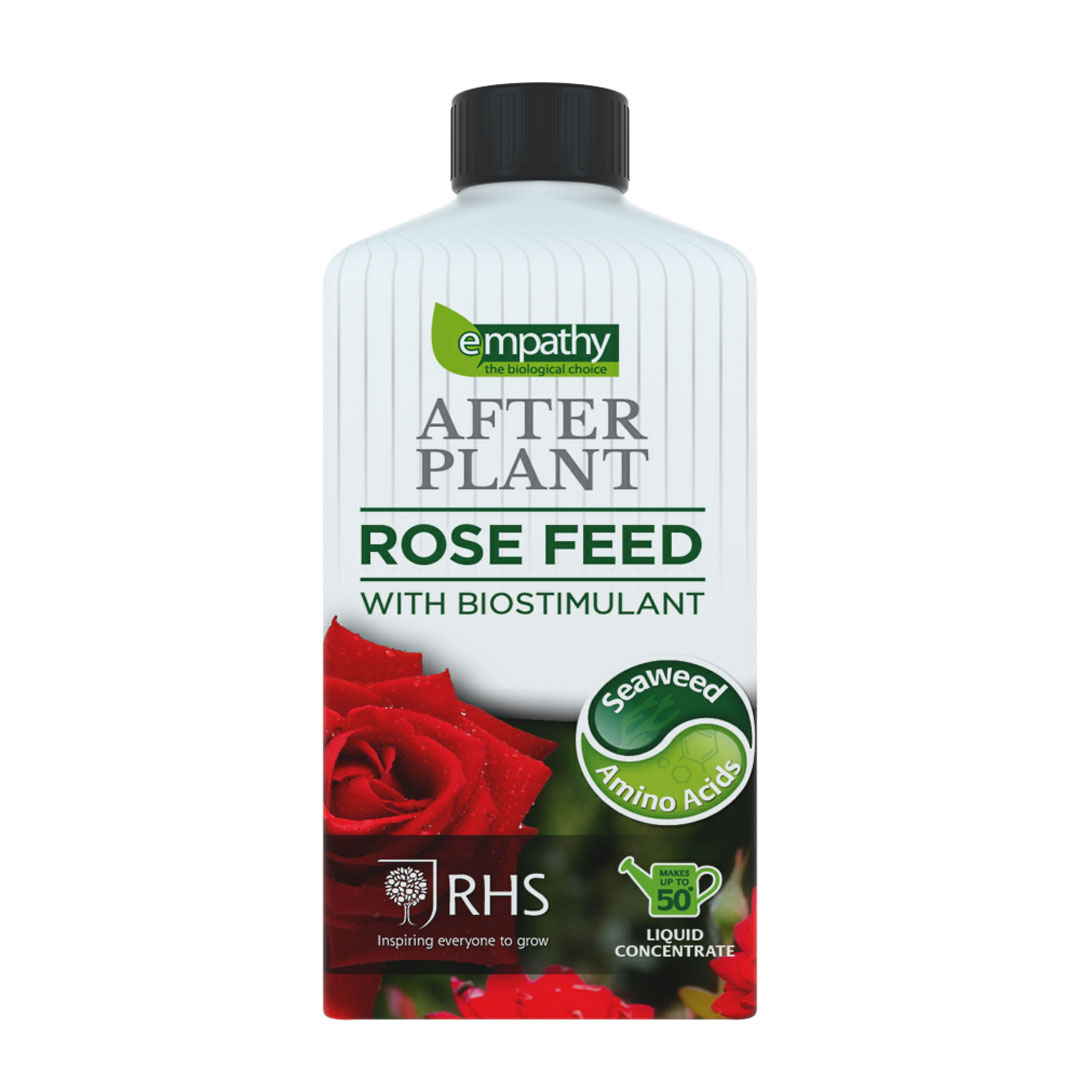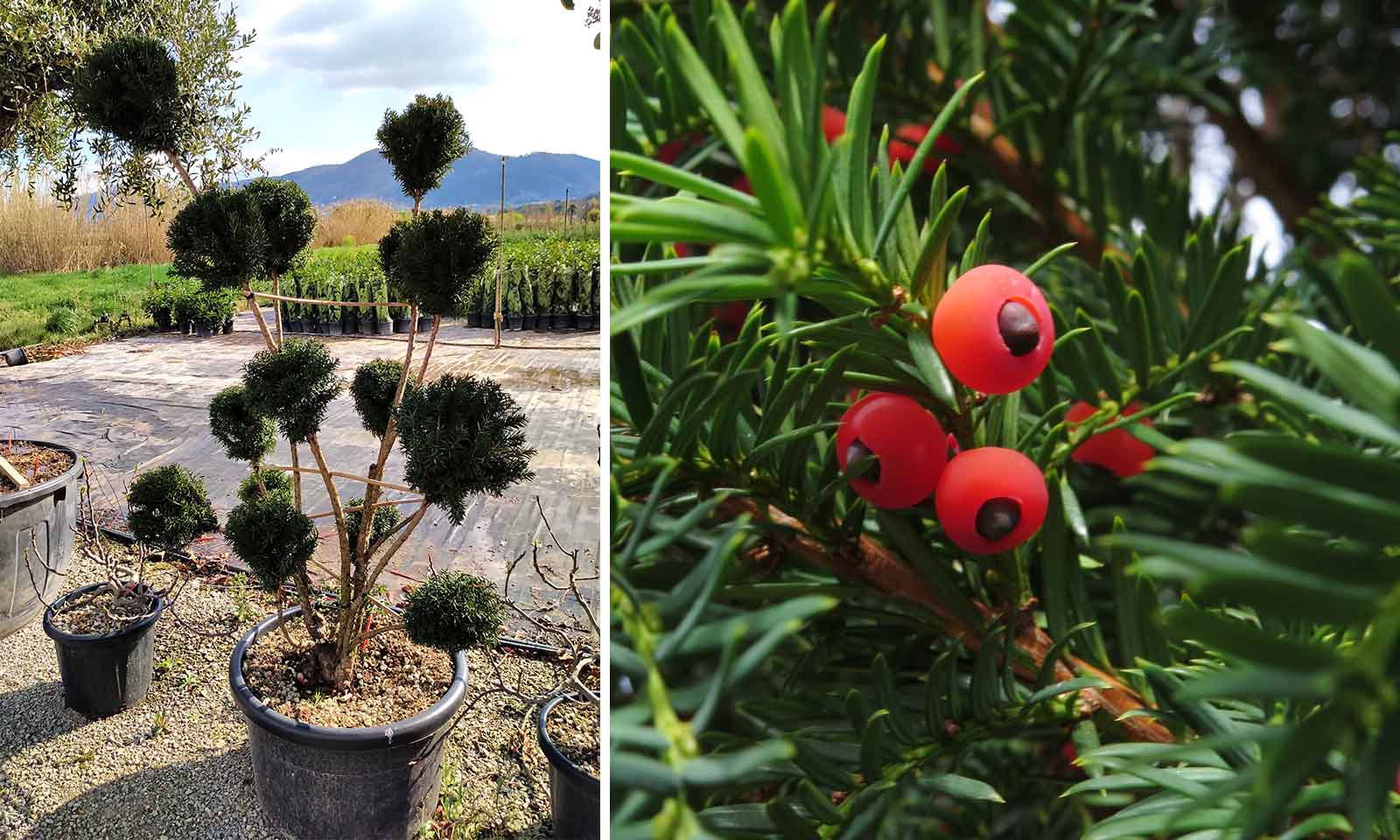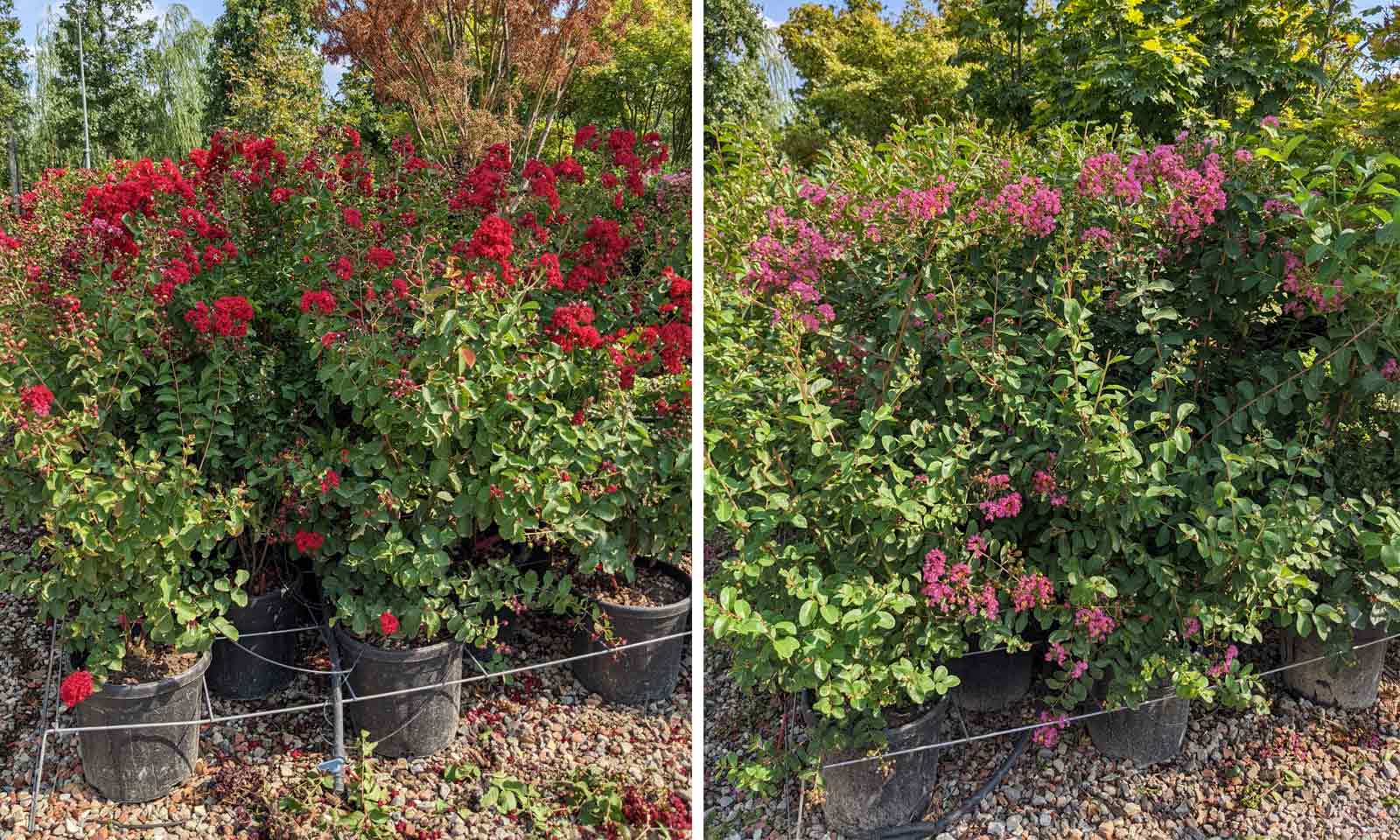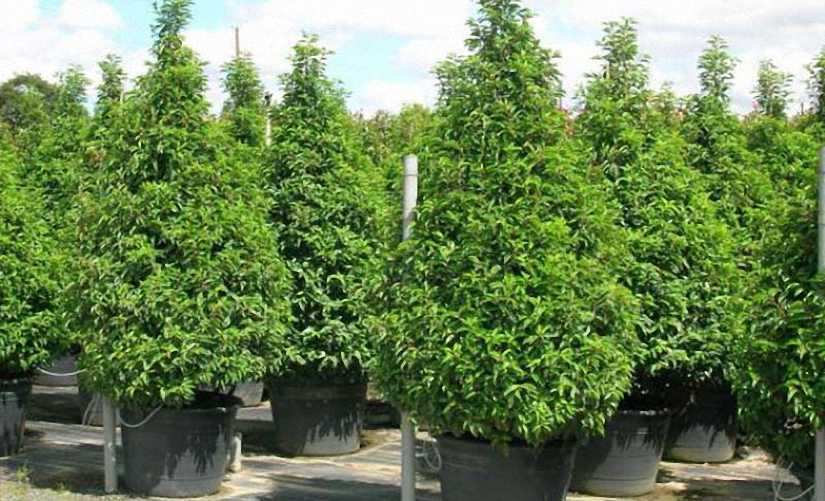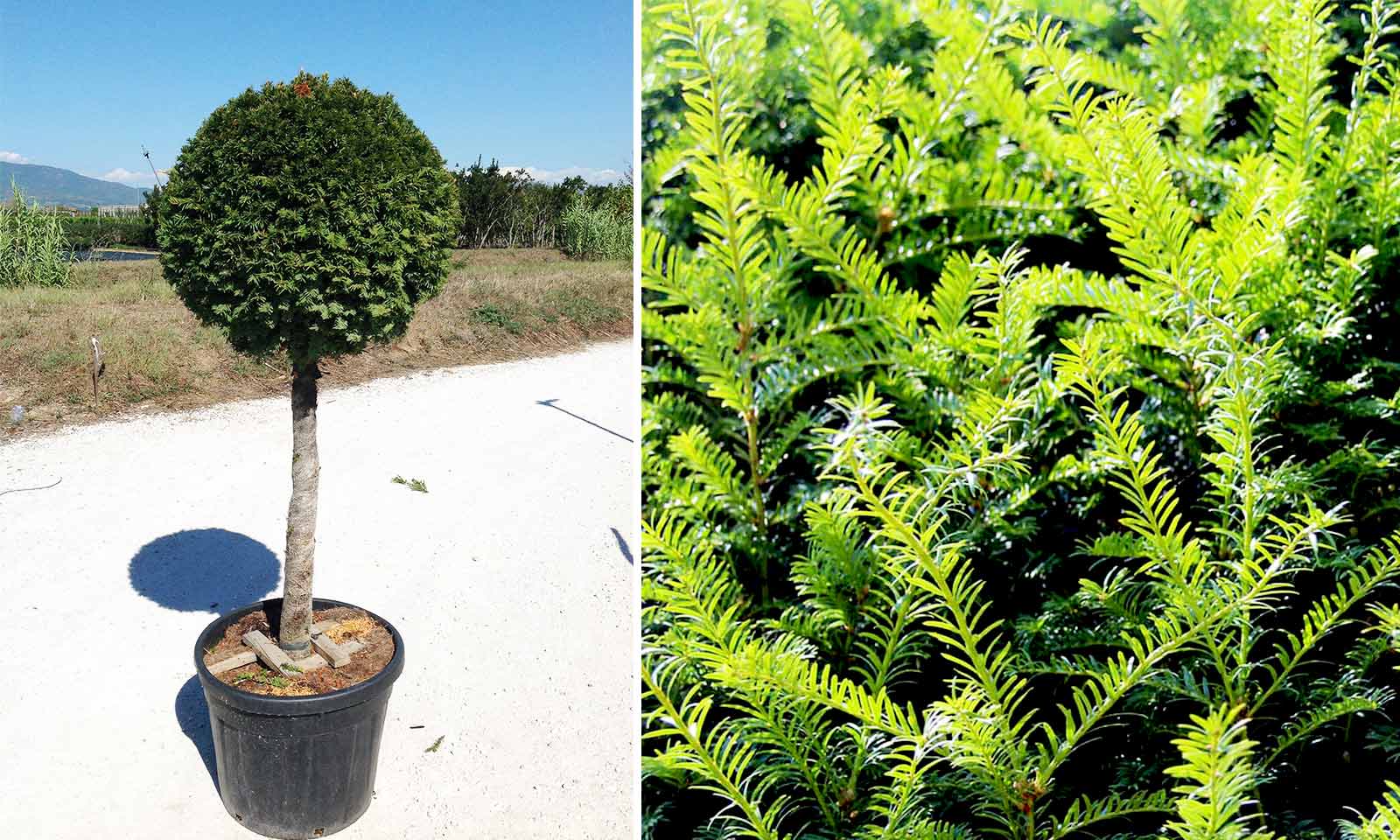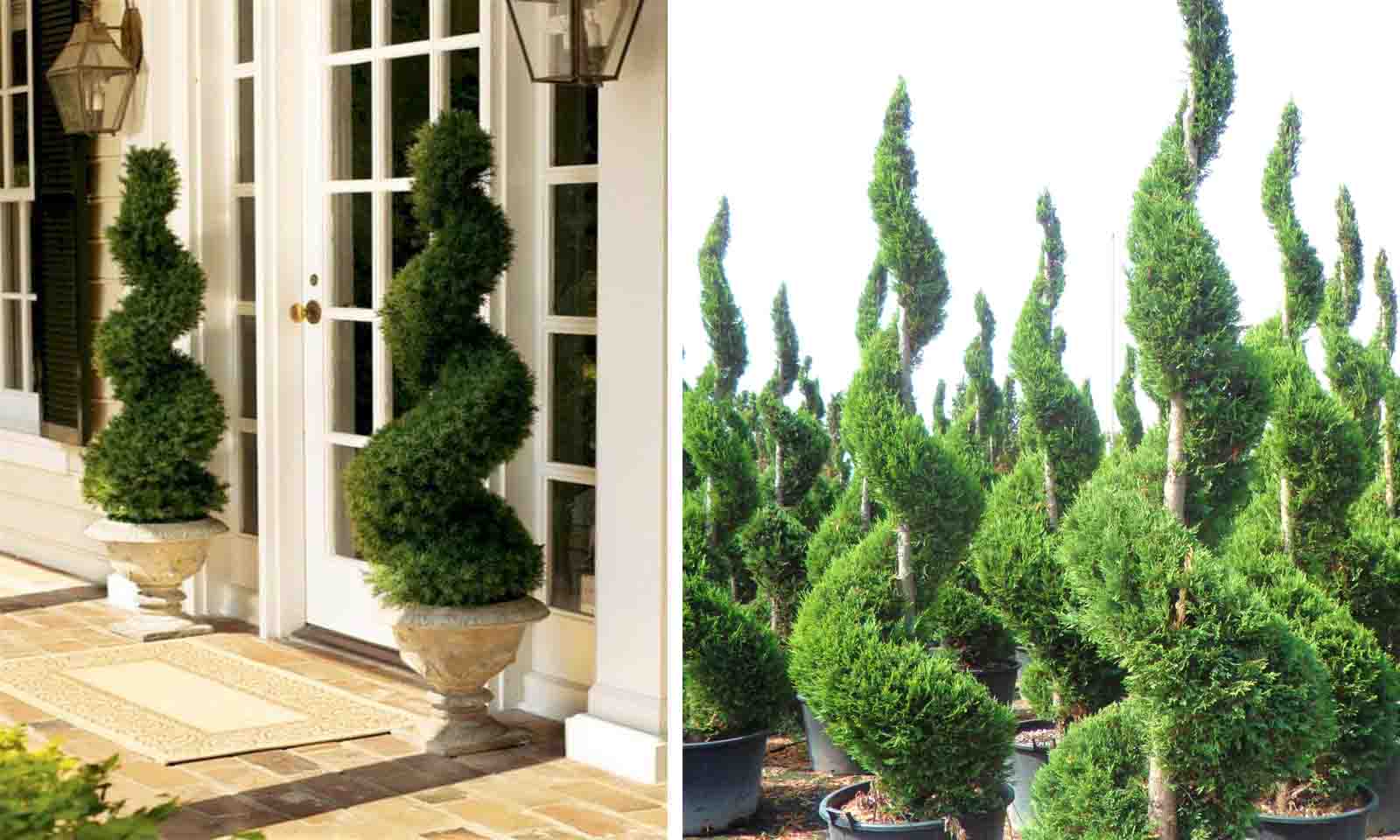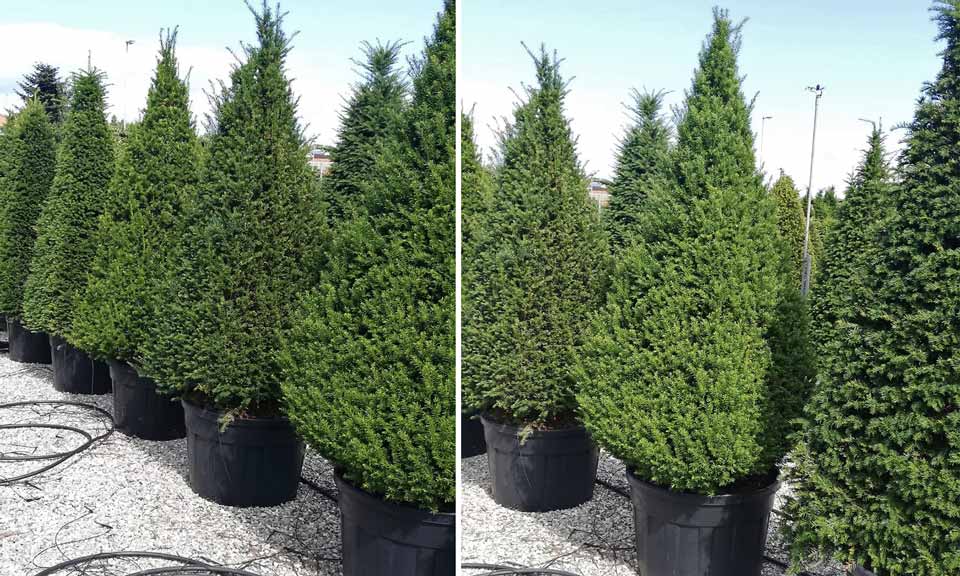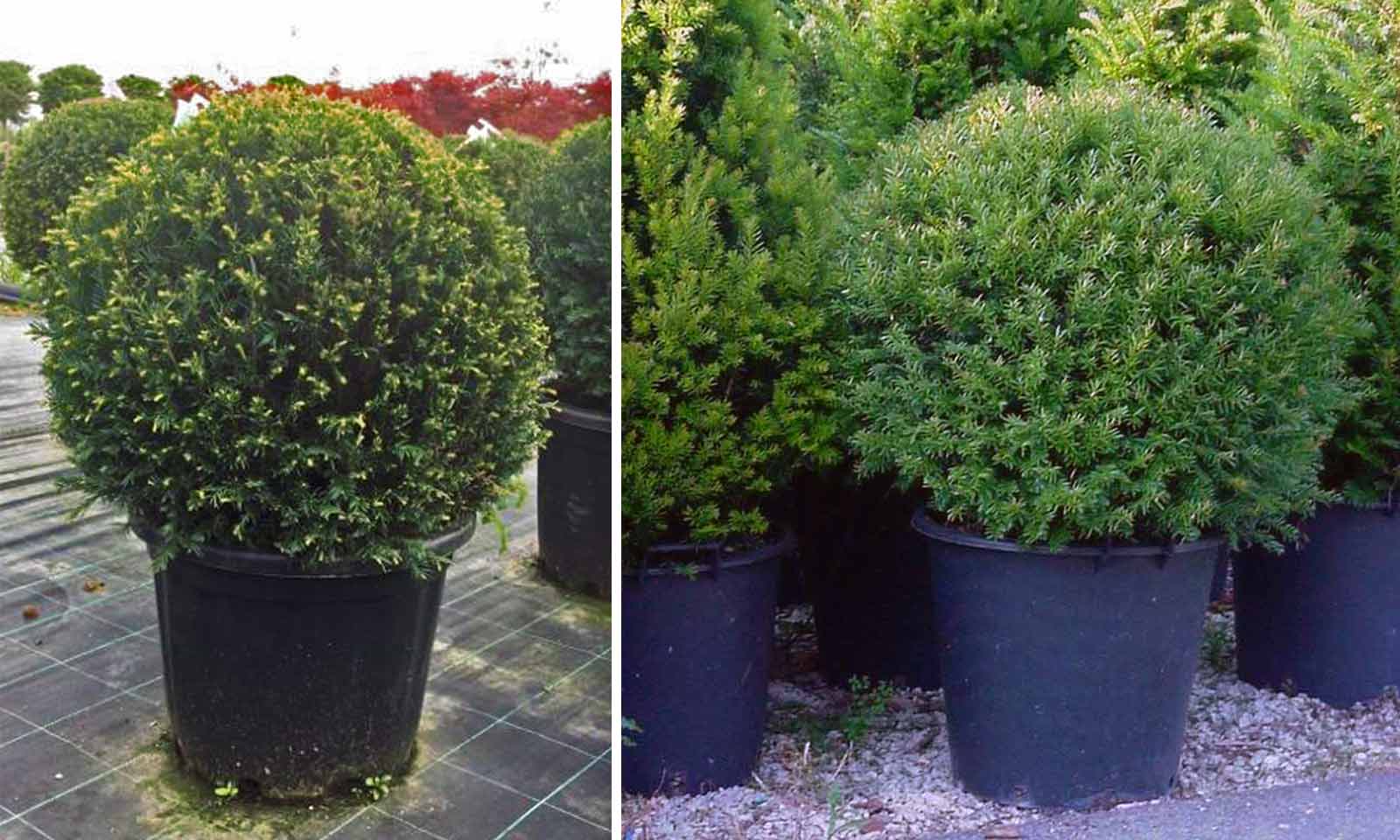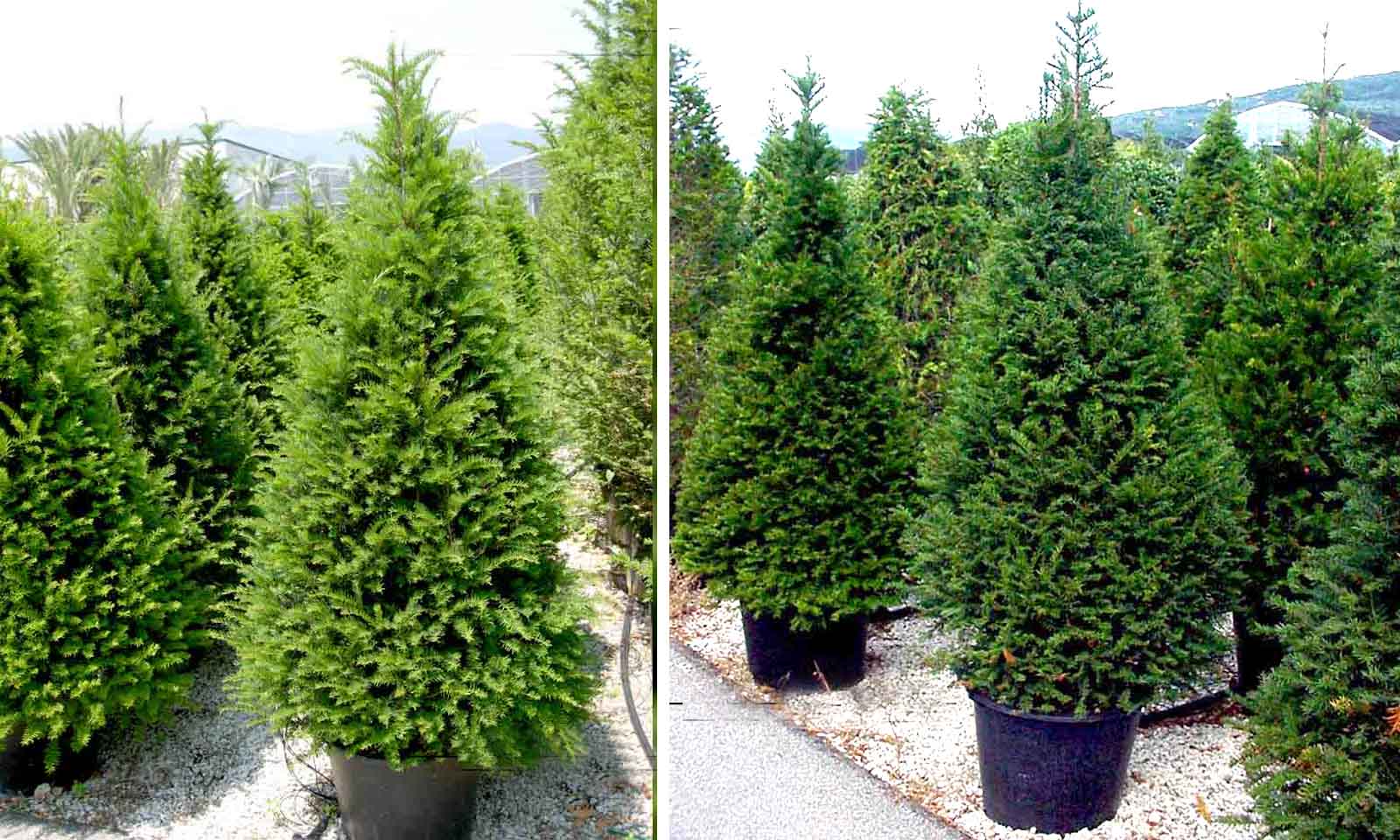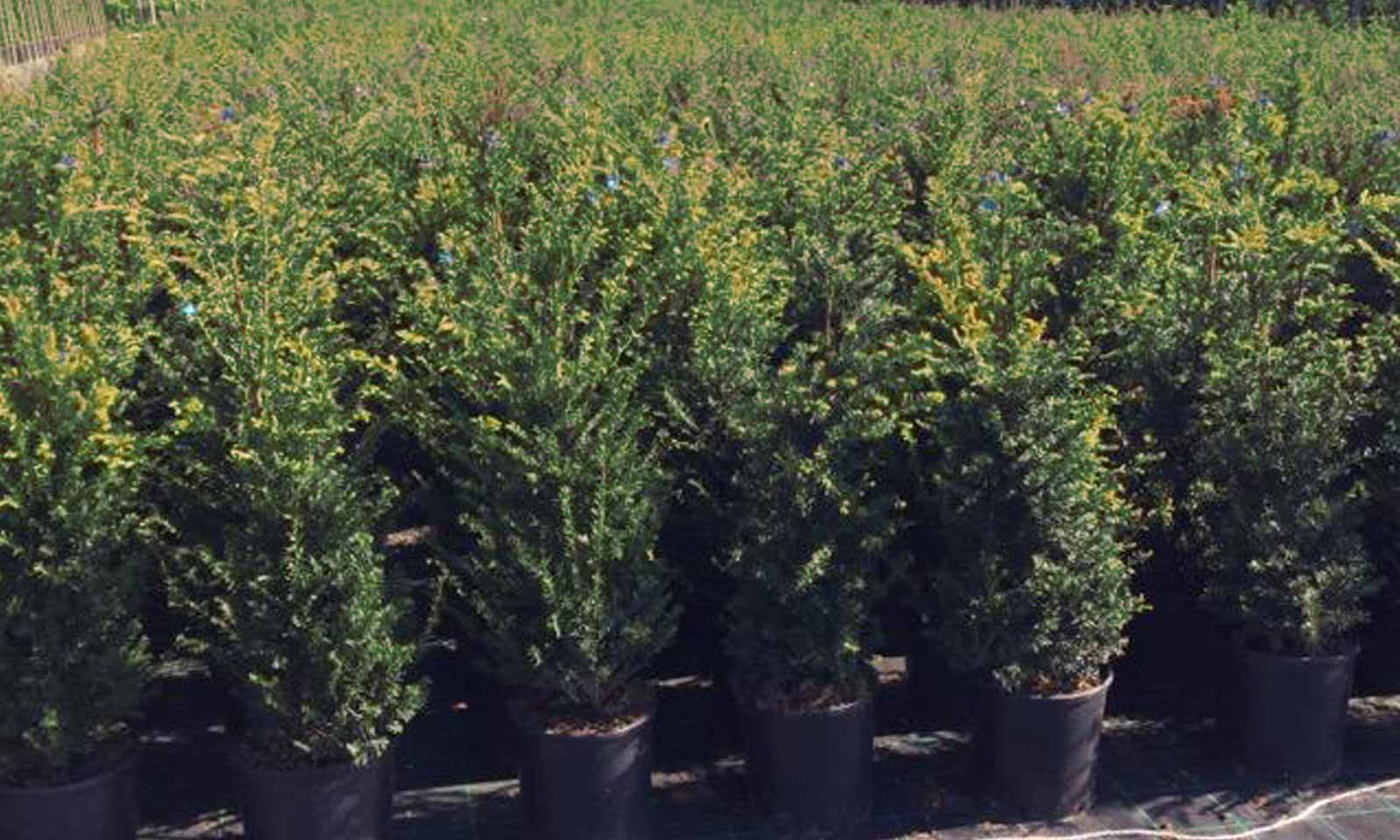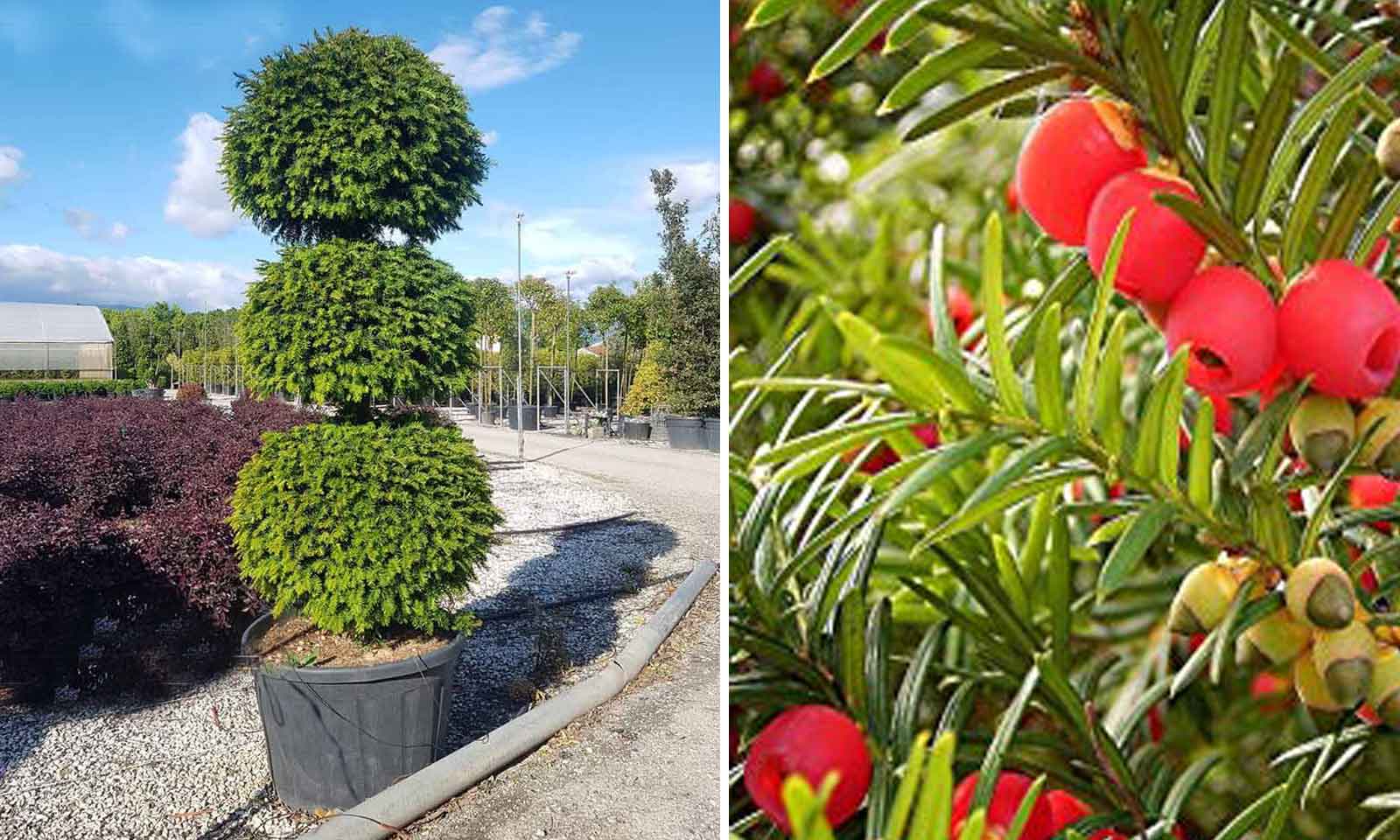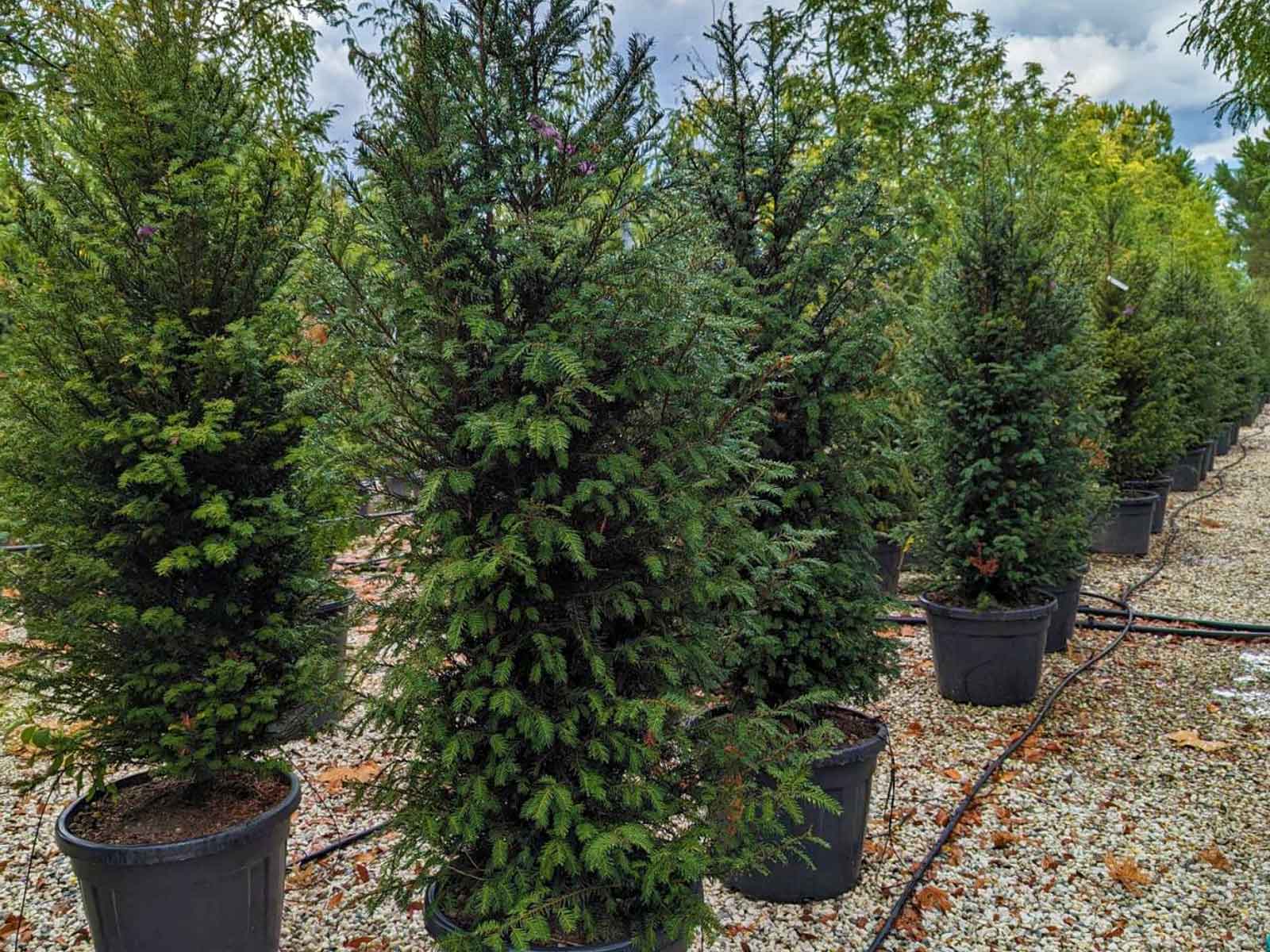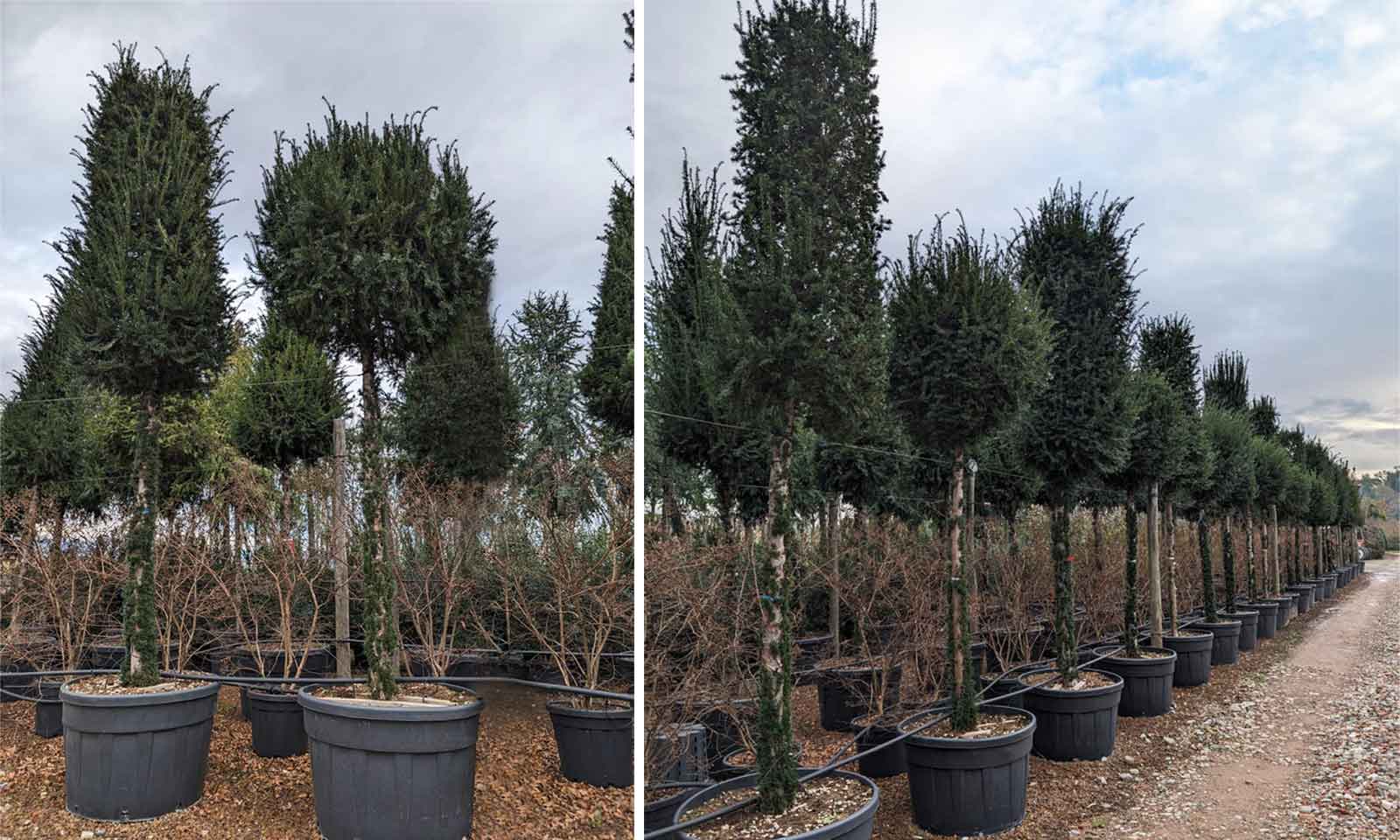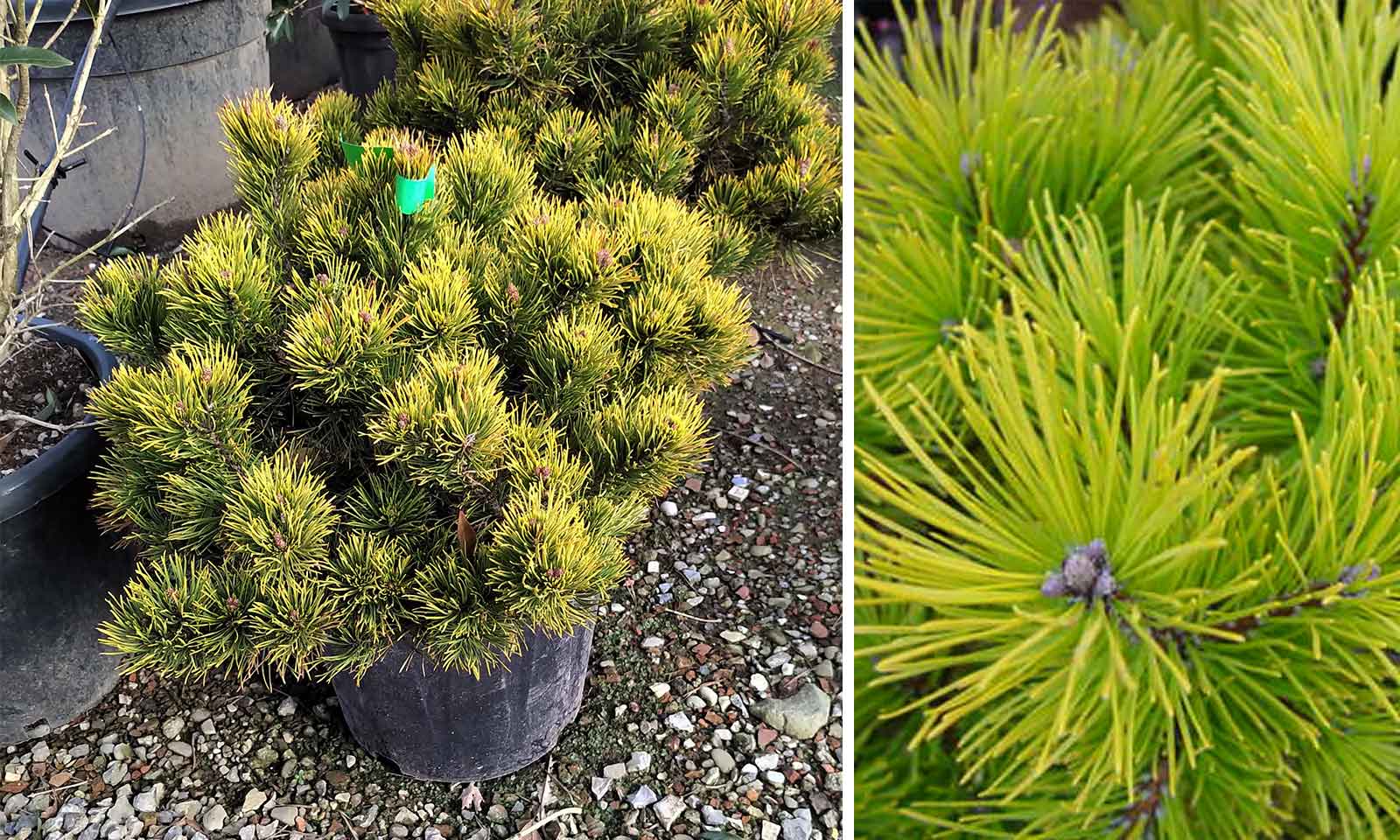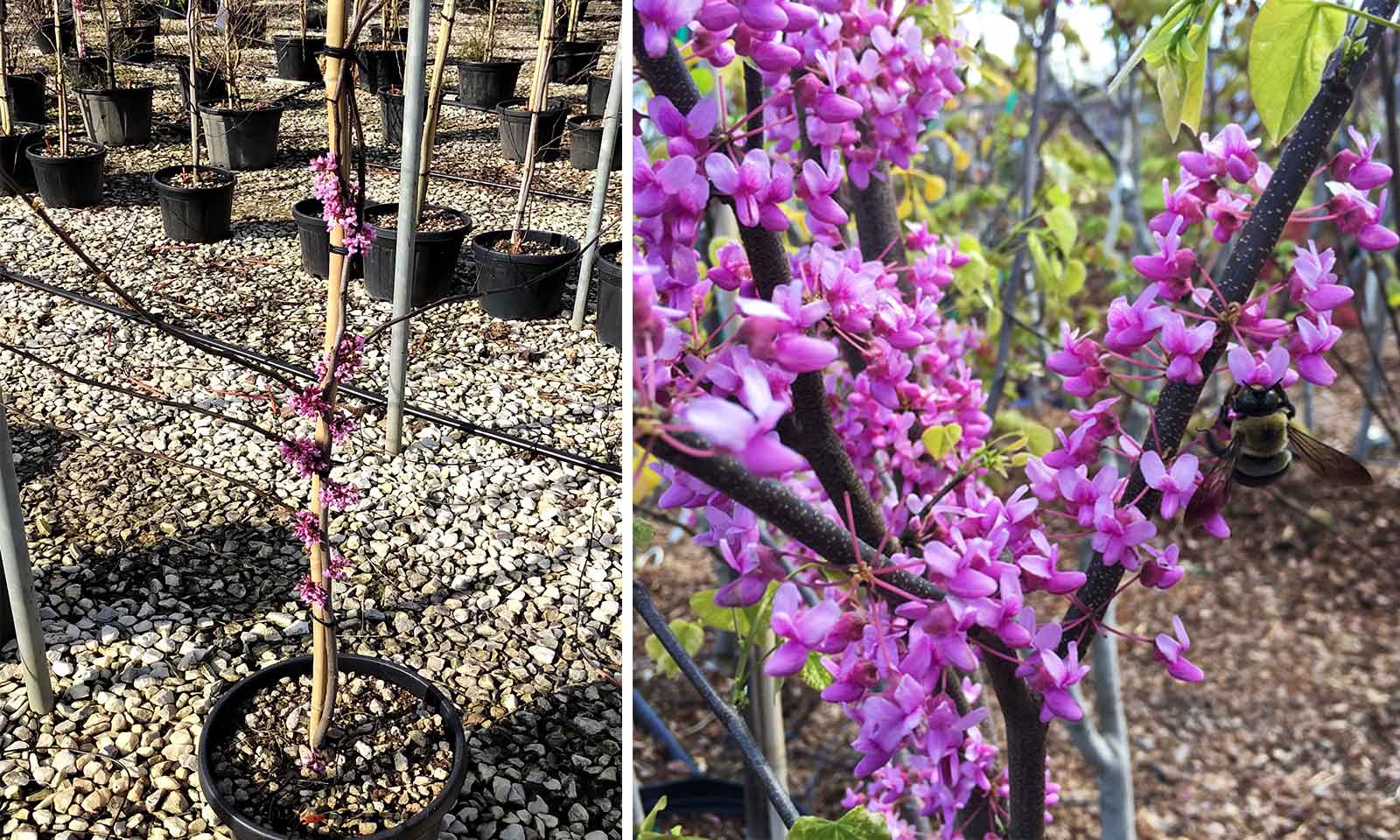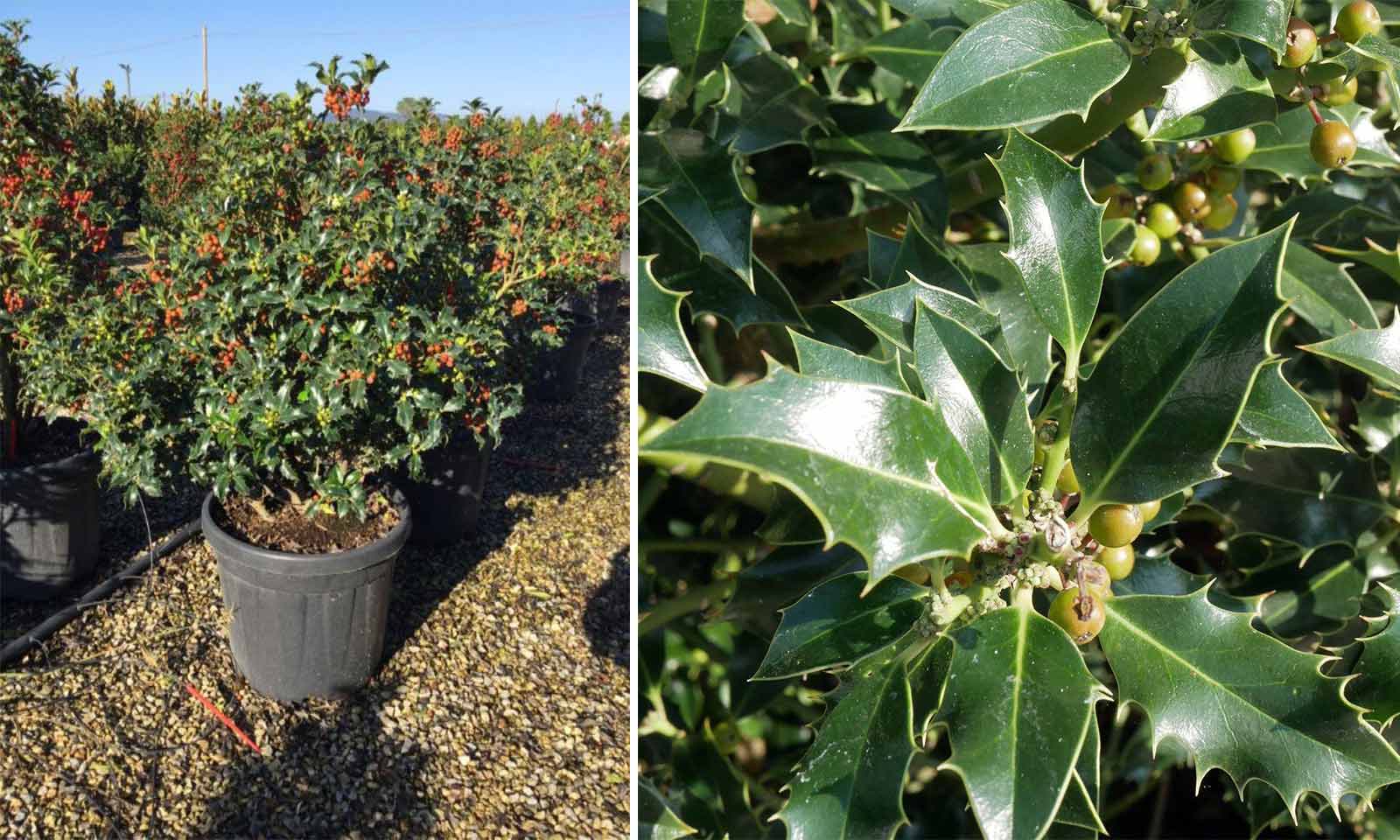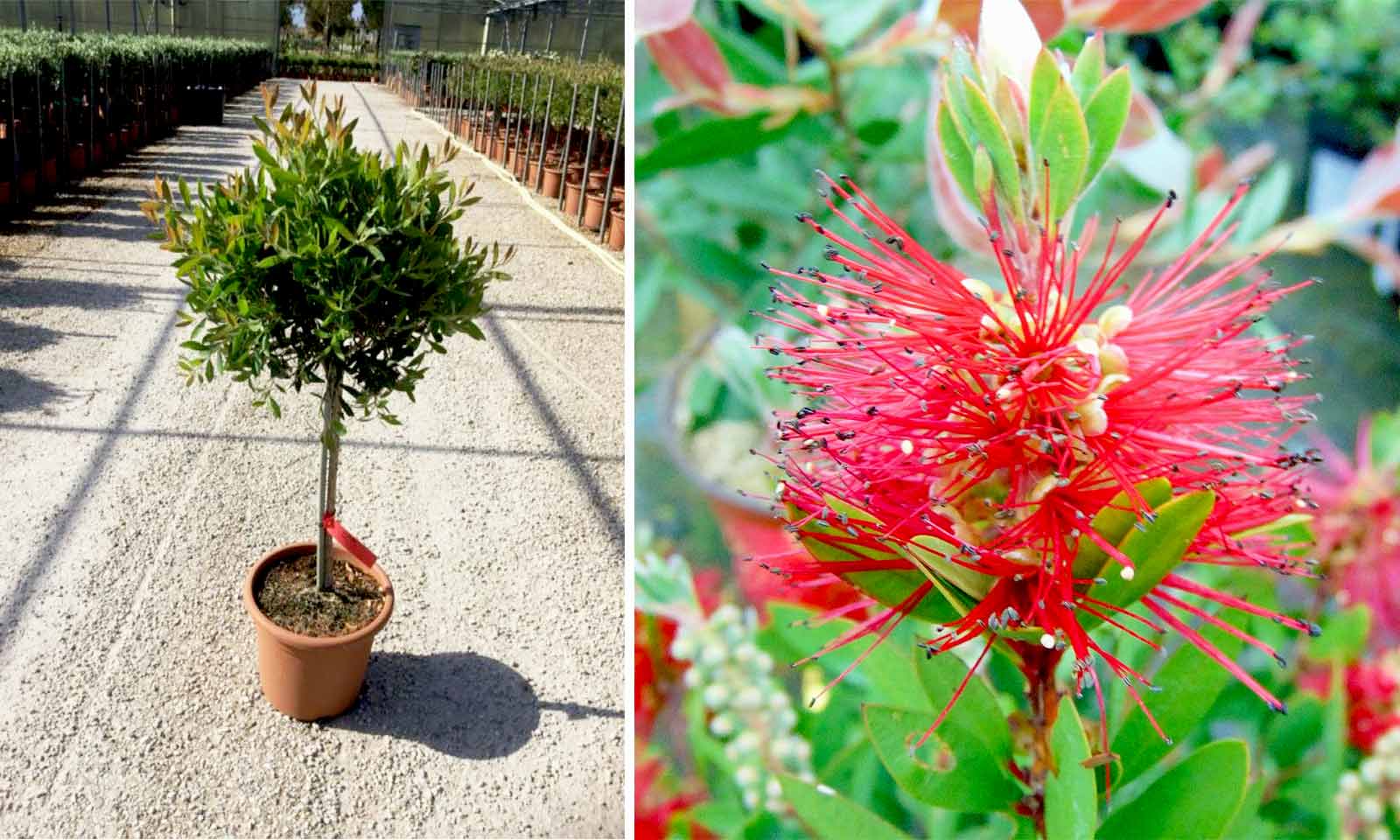Taxus Baccata (English Yew) – Standard
Taxus Baccata - conifer with main horizontal branches and secondary branches short and weeping. If left to grow freely and if it has enough space it will become a broadly conical tree with spreading, horizontal branches. Male cones are yellow in spring, followed by beautiful red fruit. Grows well in fertile, well drained soil including chalky and acid soil. Withstands being covered by old trees.
Used a lot for hedges because it tolerates severe, repeated pruning and it is also for this reason that this plant is used for creating geometric shapes and Giant Garden Bonsai. No regular pruning is required but trimming and shaping throughout the spring and summer months is advisable. The hardy rating is (H7) making this plant perfect all year throughout the UK. Fruit can grow in the Autumn time but it is advisable not to eat anything due to high levels of toxicity associated with this plant.
Please specify that type of shape (Standard / Standard Ball / Standard Cylinder / Standard Cone) would you like to have.
Product Dimensions
Standard 18-20 cm girth: 70-130 litre pot, clear trunk – 180 cm (5.9 ft), crown app. 200 cm (6.6 ft);
Standard Ball 20-25 cm girth: 130-150 litre pot, clear trunk – 180 cm (5.9 ft), crown app. 100-120 cm (3.3-3.9 ft);
Standard Cylinder 20-25 cm girth: 130-150 litre pot, clear trunk – 180 cm (5.9 ft), crown app. 180-200 cm (5.9-6.6 ft);
Standard Cone 20-25 cm girth: 130-150 litre pot, clear trunk – 180 cm (5.9 ft), crown app. 160-200 cm (5.2-6.6 ft);
Standard Cone 25-30 cm girth: 150-200 litre pot, clear trunk – 180 cm (5.9 ft), crown app. 160-200 cm (5.2-6.6 ft);
Latin Name: Taxus Baccata
English Name: English Yew, European Yew
Species: Taxaceae
Genus: Taxus
Foliage Type: Evergreen
Foliage: Green / Yellow
Flower: Inconspicuous
Flowering Period: Spring.
Suggested Location: Outdoor.
Suggested Soil Type: Well-Drained, moist but well drained. Clay, Loam.
Suggested Exposure to Sunlight: Full Sunlight or Partial Shade.
Suggested Exposure to Weather: Sheltered or Exposed.
Hardiness Rating: High (H7)
Lowest Temperature Tolerance: -30 °C to -20 °C (-22 °F to -4 °F)
Suggested Uses: Hedging and Screens, Plant Archway
Maintenance: No regular pruning necessary, but can be trimmed and shaped when required
Growth Habit: Bushy
Toxicity: Most parts, especially the seeds, are highly toxic by ingestion
Cultivation: Will tolerate exposure, dry soils and urban pollution. Good specimen plant for topiary and hedging.
Pests: May be attacked by tortrix moth, vine weevil, gall mites and scale insects
Diseases: May be subject to phytophthora root diseases
Growth Speed: Slow
Final Height: Higher than 12 m (39.4 ft)
Final Spread: Wider than 8 m (26.2 ft)
Delivery Cost: This is calculated based on the total size, weight and quantity of your order, as well as the location of your delivery address. You will see the final price at the Online Checkout Page (before making payment) – our website will automatically calculate the lowest possible delivery price and apply discounts to orders of certain products – giving you the best value delivery every time!
Please note that high-volume orders will decrease your delivery costs significantly by spreading the price across multiple items. Visit our Delivery Policy page for more information.
